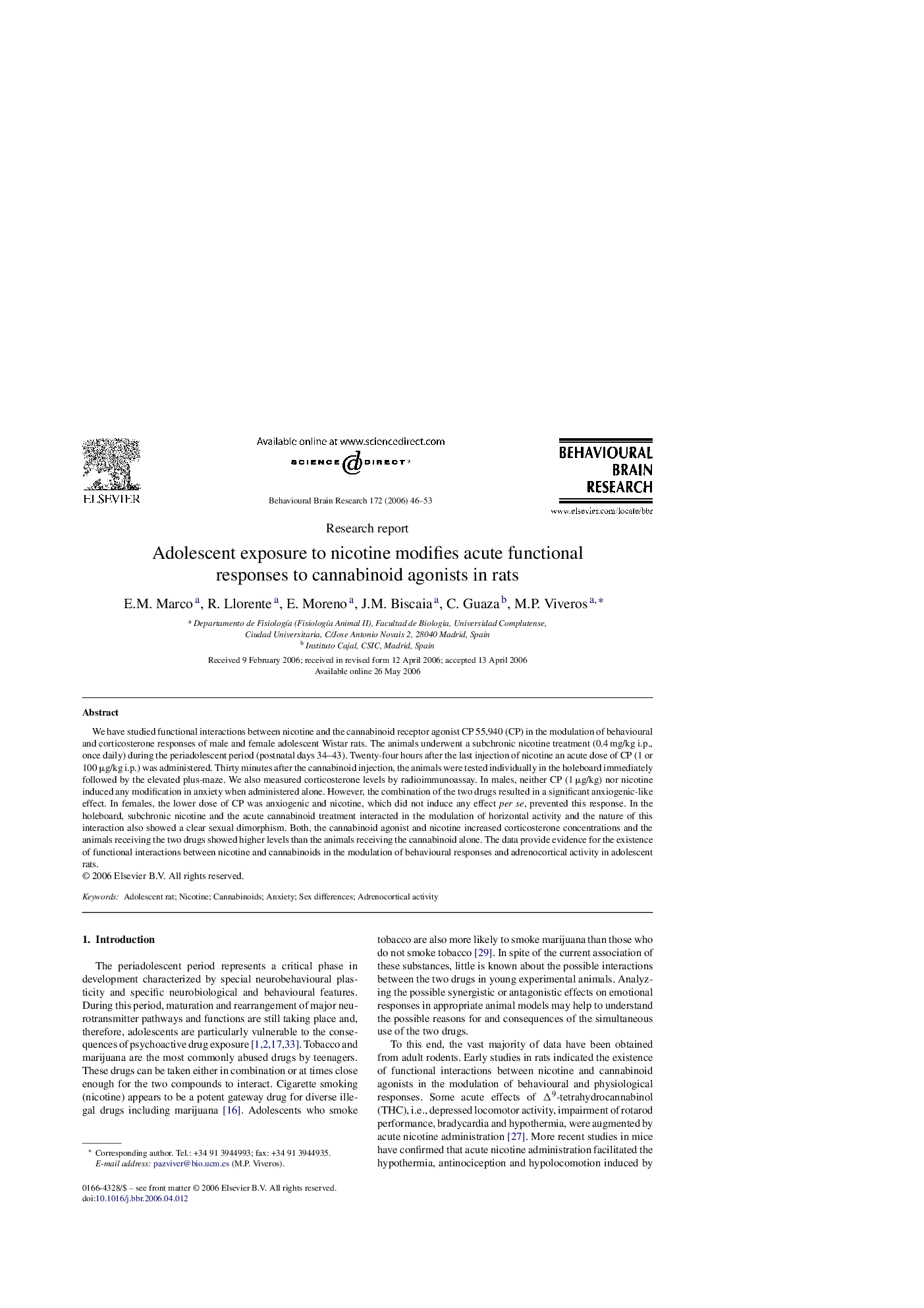| Article ID | Journal | Published Year | Pages | File Type |
|---|---|---|---|---|
| 4315955 | Behavioural Brain Research | 2006 | 8 Pages |
We have studied functional interactions between nicotine and the cannabinoid receptor agonist CP 55,940 (CP) in the modulation of behavioural and corticosterone responses of male and female adolescent Wistar rats. The animals underwent a subchronic nicotine treatment (0.4 mg/kg i.p., once daily) during the periadolescent period (postnatal days 34–43). Twenty-four hours after the last injection of nicotine an acute dose of CP (1 or 100 μg/kg i.p.) was administered. Thirty minutes after the cannabinoid injection, the animals were tested individually in the holeboard immediately followed by the elevated plus-maze. We also measured corticosterone levels by radioimmunoassay. In males, neither CP (1 μg/kg) nor nicotine induced any modification in anxiety when administered alone. However, the combination of the two drugs resulted in a significant anxiogenic-like effect. In females, the lower dose of CP was anxiogenic and nicotine, which did not induce any effect per se, prevented this response. In the holeboard, subchronic nicotine and the acute cannabinoid treatment interacted in the modulation of horizontal activity and the nature of this interaction also showed a clear sexual dimorphism. Both, the cannabinoid agonist and nicotine increased corticosterone concentrations and the animals receiving the two drugs showed higher levels than the animals receiving the cannabinoid alone. The data provide evidence for the existence of functional interactions between nicotine and cannabinoids in the modulation of behavioural responses and adrenocortical activity in adolescent rats.
